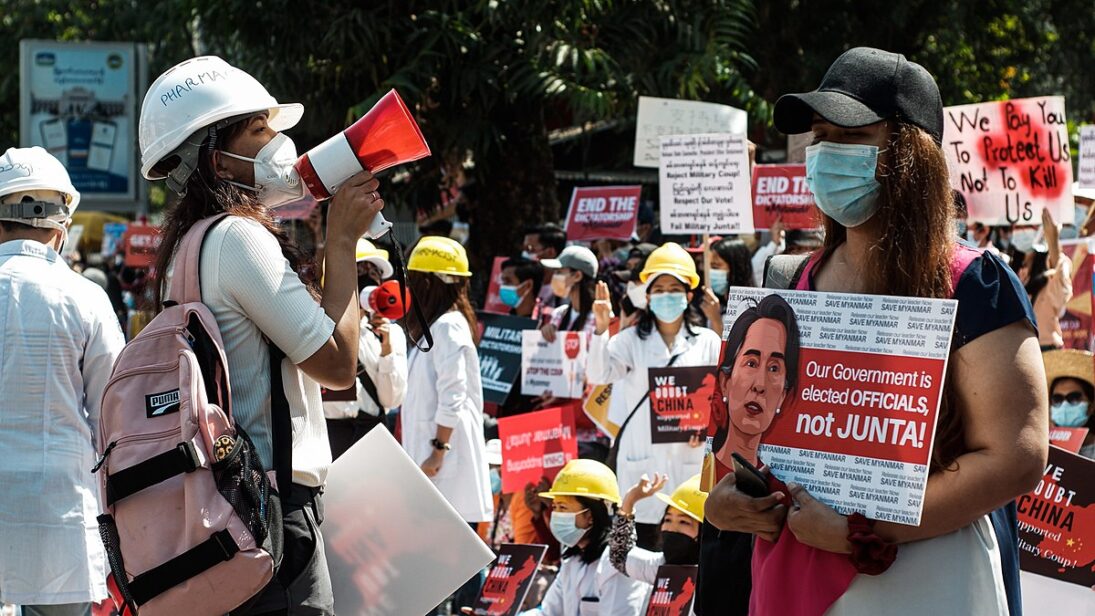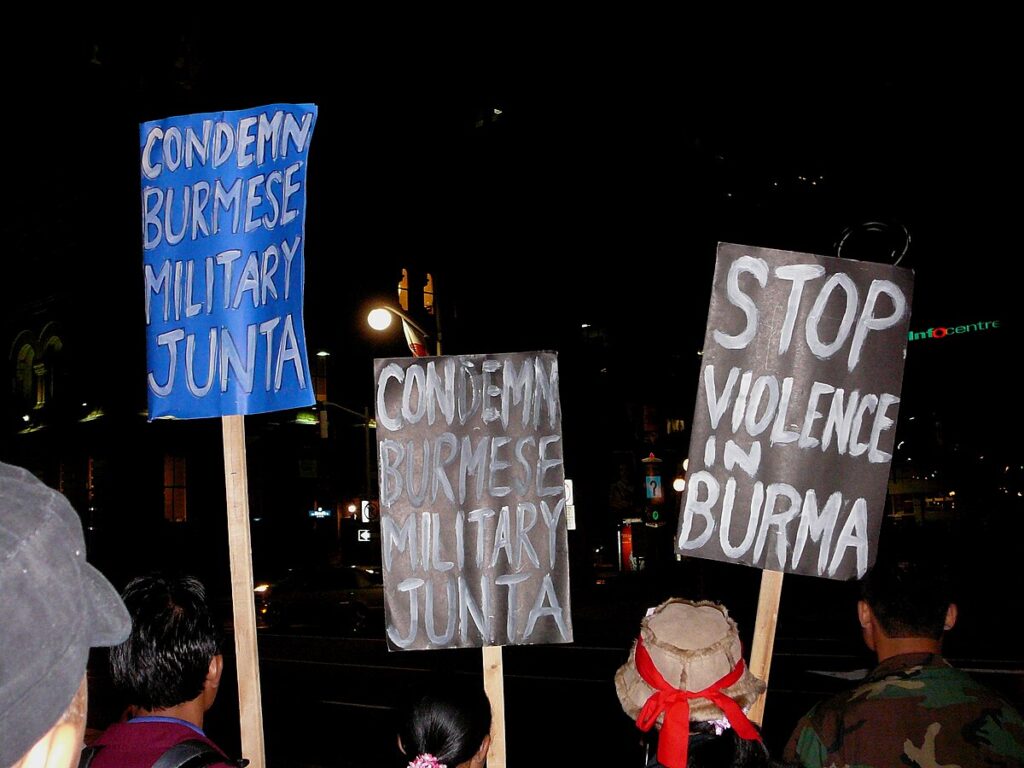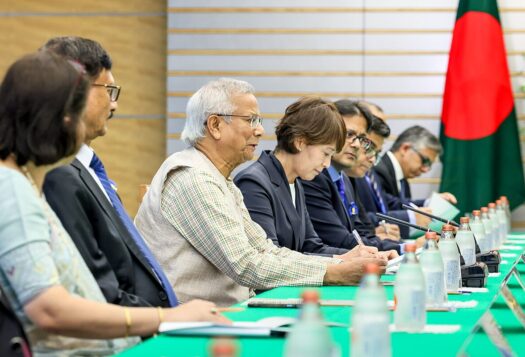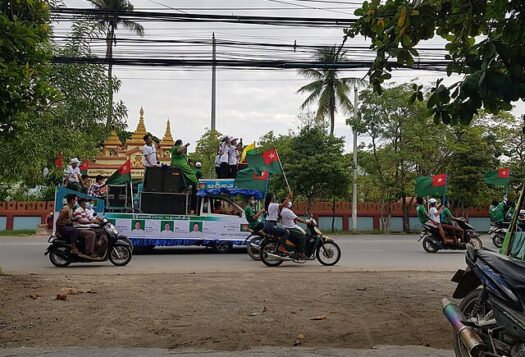
Since the military junta overthrew Myanmar’s democratically elected National League for Democracy (NLD), headed by Aung San Suu Kyi on February 1, 2021, Myanmar has been engulfed in a wave of political turmoil. The public has taken to the streets, united in their demands for the restoration of democracy and the release of their imprisoned leaders. Despite facing a brutal and sinister crackdown from the military regime, the resistance movement remains steadfast. The military has resorted to violent measures, including killing unarmed demonstrators and arresting and persecuting activists. Additionally, they have employed oppressive tactics, including press censorship, internet censorship, and blocking social media platforms.
The ongoing resistance movement in Myanmar draws inspiration from the longstanding Burmese insurgent political tradition, aiming to forge a wide and inclusive alliance between anti-junta democratic forces and ethnic armed groups (EAOs). Initially sparked by healthcare professionals who refused to cooperate with the military administration, the civil disobedience movement has gained momentum across various sectors, including banking, transportation, and education. While armed resistance has also been evident—spearheaded by diverse ethnic armed and rebel groups like the People’s Defense Forces (PDFs), Shan State Progress Party (SSPP), the United Wa State Party (UWSP), Karen National Liberation Army (KNLA), Kachin Independence Army (KIA)—the movement lacks a centralization commanded by a “federal army” that could strengthen efforts to restore democracy and freedom.
Rather than formalizing a centralized federal army, a sense of cooperation has emerged among specific armed groups, offering a glimmer of hope through their association with the People’s Defense Forces (PDFs) and other ethnic and rebel factions.
The alliance dynamics within the resistance movement continue to face challenges regarding stability and organization, despite progress in military coordination on the ground. Rather than formalizing a centralized federal army, a sense of cooperation has emerged among specific armed groups, offering a glimmer of hope through their association with the People’s Defense Forces (PDFs) and other ethnic and rebel factions. These anti-junta groups have pursued a political accord to reconcile competing interests and foster unity. However, in a setback to these efforts, the military regime recently dismantled forty political parties for noncompliance with registration procedures, effectively barring their participation in the upcoming elections. The dissolution is expected to generate further momentum within the resistance movement, potentially leading to a more cohesive approach.
Coordination Among Opposition Groups
The National Unity Government (NUG) comprises former government officials from the National League for Democracy (NLD), members of Ethnic Revolutionary Organizations (EROs), and other prominent resistance groups. Although the NUG represents a unified entity, its diverse composition and significance contribute to hosting critical debates over Myanmar’s future, shaping the path forward for the nation.
Recognizing the importance of fostering collaboration and solidarity among resistance groups, the NUG has taken significant steps to establish closer ties with EROs, leading to the formation of the Alliance Committee. Emphasizing the need for enhanced communication, the Alliance Committee has made efforts to engage with EROs, including non-aligned organizations like the Arakan Army (AA). The emergence of the Alliance Committee is regarded as a potent platform that holds the potential to unify diverse rebel factions.
With strong support from various EAOs, the NUG officially formed the People’s Defense Forces (PDFs) on May 5, 2021. The PDFs were assembled by combining EAO-trained youth and members of locally organized armed organizations, focusing on practicality rather than striving for a federal army. To unify traditionally diverse parties against the junta, the NUG and associated EROs established two crucial military collaboration platforms: the Joint Command and Coordination Committee (J2C) and the Central Command and Coordination Committee (C3C). This collaboration includes the All-Burma Students Democratic Front, Chin National Front (CNF), Karenni National Progressive Party (KNPP), Kachin Independence Army (KIA), and the NUG. Together, they form a coordinated military force that is expected to strengthen the resistance movement and shift the balance of power. The NUG also aims to maintain strong relationships with ethnic armed groups in the north, gradually integrating them into the military coordination platform, a strategic approach that appears to be effectively undermining the junta regime’s stability.
A New Impetus in the Resistance Movement?
In January 2023, the junta made an announcement regarding the upcoming elections, introducing stringent new electoral legislation drafted by the military. The junta provided political parties with a two-month window to renew their registrations under restricted measures. Subsequently, the military administration disbanded Aung San Suu Kyi’s National League for Democracy (NLD) and 39 parties. Tun Myint, a senior NLD official, explained that given the significant number of NLD members either incarcerated or actively participated in the revolution, the party had no intention of registering for the elections.

While the military designated the NUG a “terrorist group,” the NUG has firmly stated that the military lacks the authority to hold elections. However, the current dynamics suggests that the junta aims to reshape Myanmar into a quasi-civilian democratic system under its control by excluding the NLD from the political landscape. However, the recent developments brought about an impetus to the coordination of opposition groups, serving as a catalyst for the resistance movement. Analysts argue that the NLD’s (and other parties’) dissolution could further lead to a political unrest and will surely make military’s election less credible, as international dissatisfaction may trigger further sanctions against the regime.
The United States’ Role
The recent passage of the 2023 National Defense Authorization Act (NDAA) in the United States, which includes the long-delayed Burma Act, has had the most profound impact on the junta regime and has the potential to shape the future course of the resistance movement. The incorporation of the Burma Act into the NDAA underscores the significance of U.S. support for the Myanmar resistance. In response to the NDAA, the military regime expressed its concerns and organized protests by its supporters outside the U.S. Embassy in Yangon, claiming that the Act interferes with Myanmar’s internal affairs and violates its sovereignty. Additionally, there are allegations that group members protesting against the act received funding from the Union Solidarity and Development Party (USDP).
While Myanmar’s resistance movement is yet to achieve a high level of centralization by forming a federal army, there is a gradual and noticeable improvement in coordination among the opposition and ethnic armed groups.
The Burma Act has been seen by Myanmar’s opposition and civil society as a promising development, providing much-needed support for the pro-democratic resistance. This measure has served as a source of inspiration for different factions within the resistance movement, igniting a desire for enhanced coordination of activities against the junta regime. Notably, a recent series of New Year’s statements, released collectively and independently by significant participants in the resistance movement, demonstrated clear indications of possible cooperation and coordinated actions in their fight against military rule. These statements underscore a growing sense of unity, resilience, and determination among the resistance.
While Myanmar’s resistance movement is yet to achieve a high level of centralization by forming a federal army, there is a gradual and noticeable improvement in coordination among the opposition and ethnic armed groups. To bring about significant changes, the international community has a crucial role to play. Rather than engaging with the regime, envoys and ambassadors should prioritize regular meetings with the NUG and EAO officials, openly expressing their support for these discussions.
Ensuring the sustainability of these dialogue forums and keeping key stakeholders actively involved, many of whom are facing financial constraints and challenging circumstances, requires direct financial, diplomatic, and political assistance. By providing such support, the international community can contribute to these efforts’ long-term viability and effectiveness, aiding the resistance movement in their quest for democracy and freedom in Myanmar.
Also Read: Analyzing India’s Policy Options for Myanmar
***
Image 1: Protest in Myanmar against Military Coup via Wikimedia Commons
Image 2: Pro-Democracy Signs via Wikimedia Commons


